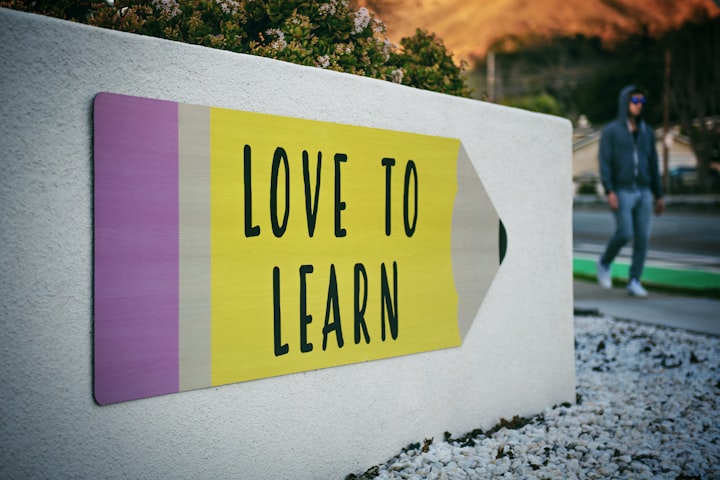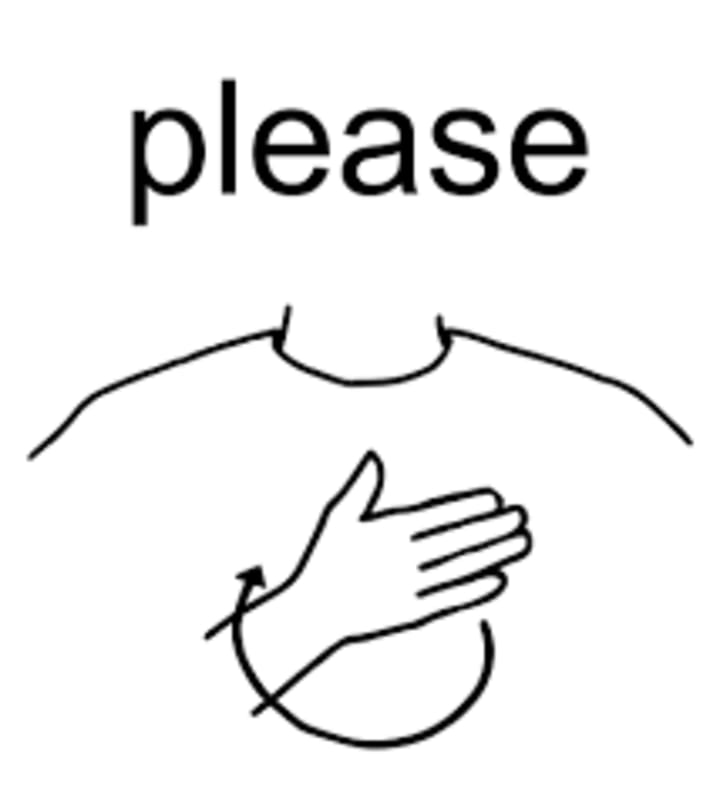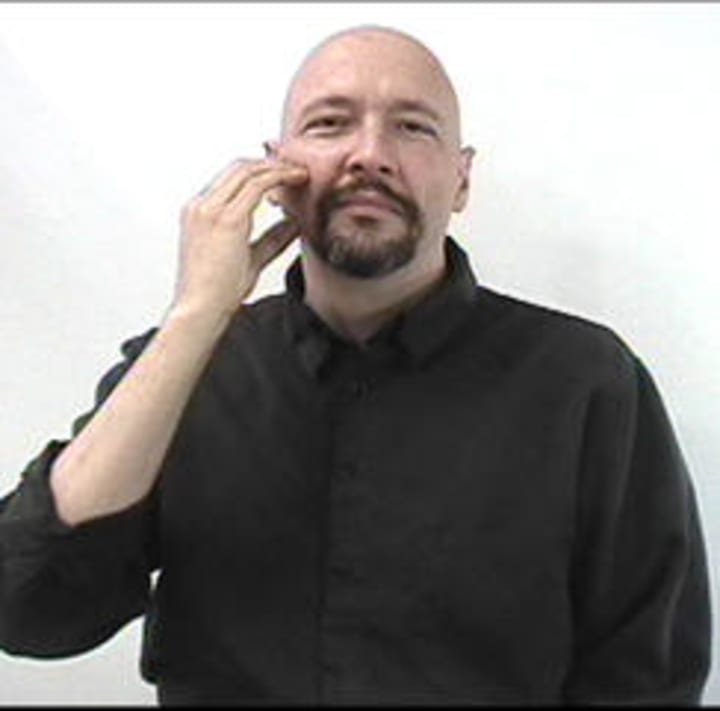The Legitimacy of Sign Language Resources
How do I know what I'm learning is real ASL?

You’re interested in learning American Sign Language, so naturally you look up many websites, join some Facebook Pages, watch YouTube videos and the like, all for learning to sign.
But how can you tell if a resource is “real”?
Here are some things to check for:
Commonality Of The Signs
Check to see if a sign is similar across various resources, i.e. dictionaries.
There will be some variations due to regionality but the common signs such as “please”, “thank you”, "yes", and "no", are pretty standard.
For example, the sign for “Please” is a flat hand circling the middle of the chest – but there’s a YouTuber “teaching” the sign up on her shoulder area.

Is It “Deaf-Friendly”
Explore the resource thoroughly, are they “deaf-friendly”? This means the site actually supports and understands Deafness and Deaf Culture.
One clear way to check is their language. Are they using the correct language?
Deaf-friendly language:
- Deaf
- Hard of Hearing
- Hearing Loss
- Deaf Culture
- Deaf Gain
- Signs ASL, (not speaks ASL)
Audist and outdated language:
- hearing disability
- hearing impaired
- suffering from
- need to be fixed
- speech & listening therapy
This is a signal that they do not understand Deaf Culture, which of course is a huge component of sign language. In my personal opinion, you cannot teach sign language without teaching Deaf Culture.
Check Their Experience
You should avoid any “teacher” that has less than 3 years ASL experience. They just don’t have enough experience signing, or enough time “immersing” in the Deaf community to be ready to teach others.
It’s pretty much “the Blind leading the Blind”. Would you take guitar lessons from someone who's only one or two lessons ahead of you?
To give you and idea how long it takes to become "fluent":
- It takes at least six 3-credit ASL courses over the span of 2-3 years to attain a beginning-intermediate skill.
- It takes another 2 years in the ASL/English interpretation training program to attain an intermediate-fluent skill.
- It takes a few years after graduating the interpreting program to finally be considered a fluent skill.
So roughly 7 years of formal training to become a fluent signer. Now this is just for those who only sign in the classroom and do very little interaction with the Deaf community. There are some who become fluent much faster, expecialy those who converse daily with a Deaf person.
Note: Avoid any site that claims you can learn ASL in 30 days. Can you memorize and speak any other language fluently in that amount of time - accent, afliction, tone, and all?
Are They Current and Up-to-Date
Make sure the vocabulary lists used are current and up-to-date on proper terminology and words used these days.
ASL is a very fluid and changes with the times, such as the new sign for “phone” is now a C-shape as if holding a cell phone to the cheek – as opposed to the Y-shape of the older phone receivers.

There’s one popular GIF site that still teaches the sign for “Mental Retarded” instead of Developmental Delayed or Intelligence Delayed.
Of course, don't expect the latest lingo to have an ASL sign right away either. ASL signs go through a process of inventing a sign, making sure it follows all the "grammar rules", then sees if it goes viral through the Deaf community before it's adopted as "the sign".
Do They Have The Deaf Community Involved?
Are there anyone on the site or page that are Deaf themselves? If it’s all “hearing” managed without any Deaf involvement or Deaf members – you need to question why that is?
The Deaf community is so diverse in personalities and types that they’ll have various interests and participate in different activities, so if there’s an “ASL” or “Deaf” site without any Deaf people, that’s a big red flag.
There are some ASL or Deaf sites that:
- Don't allow Deaf members for a number of reasons - "Deaf already know how to sign" (this is bullsh$t)
- Voice all their lessons and Deaf have pushed back (for good reason)
- They have been called out on their bad signing so they avoid having Deaf in their group.
- Deaf voices and opinions have been quashed and silenced so many leave in frustration.
Another factor of importance is that Deaf and hard of hearing fluent signers should be your first go-to for learning sign language.
This is important for two main reasons:
- Deaf and hard of hearing signers live and breath the language - they use it daily. They know the Culture, they know and have gone through the sturggle of audism, discrimination and more. On the other hand, hearing signers don't necessarily use it daily but they don't depend on it, they can "drop their hands" and communicate and interact without barriers.
- The employment rate for Deaf and hard of hearing is roughly 48% and many of these are underemployed (Deaf with Masters and PhDs having to take factory jobs because headhunters can't overlook the deafness). ASL is an ready and available asset to employment opportunities, so teaching ASL should almost always go to Deaf and hard of hearing fluent teachers.
That's why check to see how's their Deaf population and how they are treated in that group.
My List of Reliable ASL Resources
Of course I wouldn't talk about ASL and not provide a starting point to learn.
Top 3 ASL Learning Resources:
LifePrint - Free and paid self-paced lessons (plus a Facebook practice group)
ASLDeafined - Free to try out and a small yearly subscription after that.
Deaf Cooperative: ASL Tutors and Mentors - A Facebook group that lists only Deaf teachers and mentors.
Top 3 ASL Dictionaries
LifePrint - Again, they have an extensive dictionary to look up signs.
Signing Savvy - A large list of vocabulary and themed lists (and you can put together your own list)
HandSpeak - An online dictionary and they have a feature where you can "look up" a sign by describing what it looks like.
Top 3 ASL Books
American Sign Language Dictionary
The Gallaudet Dictionary of American Sign Language
Note: As ASL is a visual language, learning from flat, still pictures may not be a great starting point. But once you learn the parameters and handshapes of ASL, a book can help as you can already visualize the signs from the descriptions.
Lastly, the best resource is your local Deaf community. Check local Deaf agencies and local colleges for sign language classes and go from there. Once you start learning, look for Deaf events to attend such as Deaf Coffee, Silent Dinners (usually meet-up in a Mall cafeteria or similar setting), and Agency meetings.
Keep learning!
About the Creator
Tracy Stine
Freelance Writer. ASL Teacher. Disability Advocate. Deafblind. Snarky.






Comments
There are no comments for this story
Be the first to respond and start the conversation.